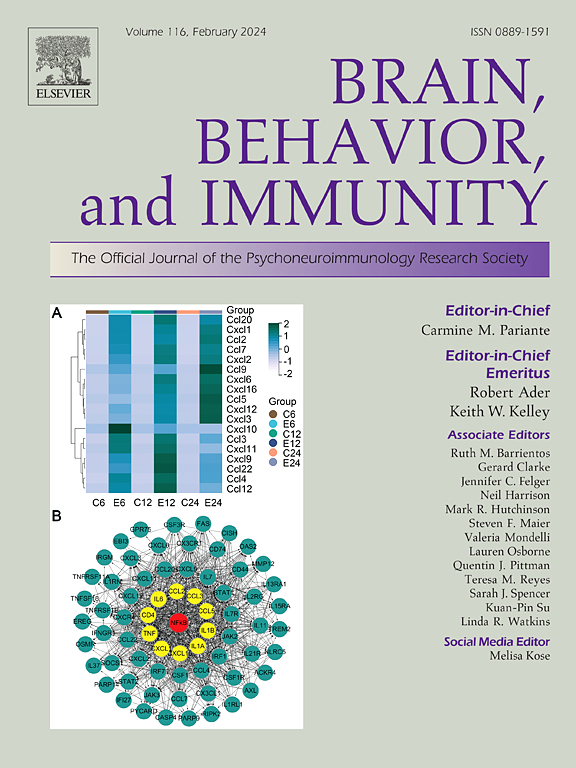Ancient viral DNA in the human genome linked to neurodegenerative diseases
IF 8.8
2区 医学
Q1 IMMUNOLOGY
引用次数: 0
Abstract
Background
Human endogenous retroviruses (HERVs) are sequences in the human genome that originated from infections with ancient retroviruses during our evolution. Previous studies have linked HERVs to neurodegenerative diseases, but defining their role in aetiology has been challenging. Here, we used a retrotranscriptome-wide association study (rTWAS) approach to assess the relationships between genetic risk for neurodegenerative diseases and HERV expression in the brain, calculated with genomic precision.
Methods
We analysed genetic association statistics pertaining to Alzheimer’s disease, amyotrophic lateral sclerosis, multiple sclerosis, and Parkinson’s disease, using HERV expression models calculated from 792 cortical samples. Robust risk factors were considered those that survived multiple testing correction in the primary analysis, which were also significant in conditional and joint analyses, and that had a posterior inclusion probability above 0.5 in fine-mapping analyses.
Results
The primary analysis identified 12 HERV expression signatures associated with neurodegenerative disease susceptibility. We found one HERV expression signature robustly associated with amyotrophic lateral sclerosis on chromosome 12q14 (MER61_12q14.2) and one robustly associated with multiple sclerosis on chromosome 1p36 (ERVLE_1p36.32a). A co-expression analysis suggested that these HERVs are involved in homophilic cell adhesion via plasma membrane adhesion molecules.
Conclusions
We found HERV expression profiles robustly associated with amyotrophic lateral sclerosis and multiple sclerosis susceptibility, highlighting novel risk mechanisms underlying neurodegenerative disease, and offering potential new targets for therapeutic intervention.
人类基因组中的古老病毒 DNA 与神经退行性疾病有关。
背景:人类内源性逆转录病毒(HERVs)是人类基因组中的序列,起源于人类进化过程中感染的古老逆转录病毒。以前的研究已将 HERVs 与神经退行性疾病联系起来,但确定其在病因学中的作用一直是个挑战。在此,我们采用了一种全逆转录病毒组关联研究(rTWAS)方法,评估神经退行性疾病的遗传风险与大脑中 HERV 表达之间的关系,并进行了基因组精确计算:我们利用从 792 个皮层样本中计算出的 HERV 表达模型,分析了与阿尔茨海默病、肌萎缩侧索硬化症、多发性硬化症和帕金森病有关的遗传关联统计数据。稳健的风险因素被认为是那些在初级分析中通过多重检验校正,在条件分析和联合分析中也具有显著性,并且在精细图谱分析中后纳入概率高于 0.5 的因素:结果:初步分析确定了 12 个与神经退行性疾病易感性相关的 HERV 表达特征。我们在染色体 12q14 上发现了一个与肌萎缩侧索硬化症密切相关的 HERV 表达特征(MER61_12q14.2),在染色体 1p36 上发现了一个与多发性硬化症密切相关的 HERV 表达特征(ERVLE_1p36.32a)。共同表达分析表明,这些 HERVs 通过质膜粘附分子参与了嗜同性细胞粘附:结论:我们发现 HERV 表达谱与肌萎缩侧索硬化症和多发性硬化症的易感性密切相关,凸显了神经退行性疾病的新风险机制,并为治疗干预提供了潜在的新靶点。
本文章由计算机程序翻译,如有差异,请以英文原文为准。
求助全文
约1分钟内获得全文
求助全文
来源期刊
CiteScore
29.60
自引率
2.00%
发文量
290
审稿时长
28 days
期刊介绍:
Established in 1987, Brain, Behavior, and Immunity proudly serves as the official journal of the Psychoneuroimmunology Research Society (PNIRS). This pioneering journal is dedicated to publishing peer-reviewed basic, experimental, and clinical studies that explore the intricate interactions among behavioral, neural, endocrine, and immune systems in both humans and animals.
As an international and interdisciplinary platform, Brain, Behavior, and Immunity focuses on original research spanning neuroscience, immunology, integrative physiology, behavioral biology, psychiatry, psychology, and clinical medicine. The journal is inclusive of research conducted at various levels, including molecular, cellular, social, and whole organism perspectives. With a commitment to efficiency, the journal facilitates online submission and review, ensuring timely publication of experimental results. Manuscripts typically undergo peer review and are returned to authors within 30 days of submission. It's worth noting that Brain, Behavior, and Immunity, published eight times a year, does not impose submission fees or page charges, fostering an open and accessible platform for scientific discourse.

 求助内容:
求助内容: 应助结果提醒方式:
应助结果提醒方式:


